
When getting out into nature means waiting in traffic for two hours, there’s a problem. In 2017, U.S. National Parks saw over 330 million visits — that’s slightly more than the population of the United States — causing traffic congestion in many of the most picturesque locales. Here are other places that are sick and tired of tourists.
Luckily, many national parks are less crowded in the fall, when summer vacation traffic dies down and visitors centers and other amenities go into off-season hours or shut down completely. 24/7 Tempo found the best national parks to visit in the fall based on which parks boast autumn foliage colors and are known to be less crowded in the autumn off-season. Here are the places with the best fall foliage in every state.
With the exception of a few foliage hotspots like Shenandoah National Park and Great Smoky Mountains National Park, the months of October and November bring fewer visitors to our foliage-bearing national parks, and provide a more peaceful viewing experience.
To determine the best national parks to visit in the fall, 24/7 Tempo reviewed National Park Service websites and those of several travel publications to determine off-season months for each park. Parks that are known to have increased traffic due to foliage viewers in the fall were eliminated, as were parks that experience no reported foliage change.
Seasonal weather changes were taken into account and most national parks in Alaska were not considered, as driving conditions in the fall can be dangerous and many park roads shut down after first snowfall. Parks in the South that experience higher visitor numbers in autumn due to prohibitive summer temperatures were also eliminated.
Visitation and recreational days spent in each park (one recreational day = 12 visitor hours spent in the park), as well as total visitation figures for each state, are from the 2018 Statistical Abstract on National Parks, published by the National Park Service.
Click here to see the best national parks to visit in the fall.
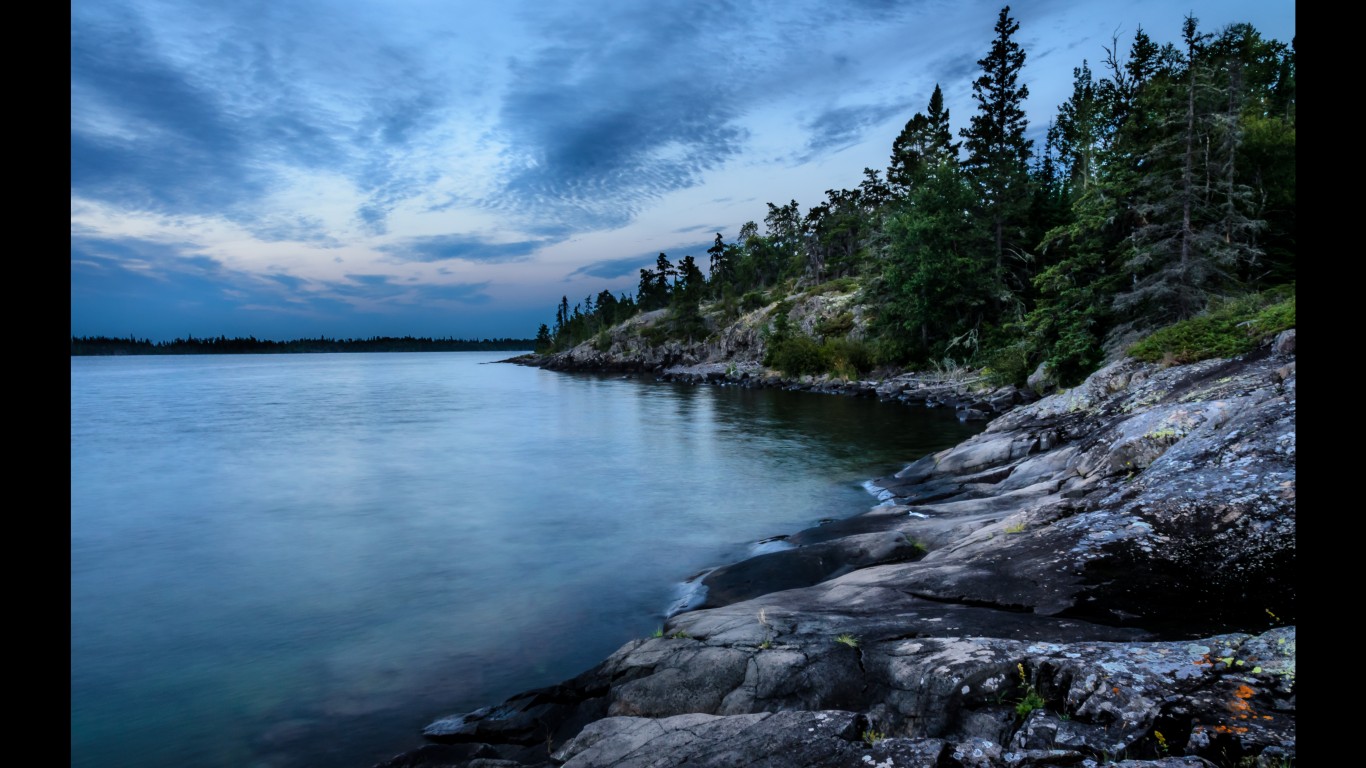
26. Isle Royale National Park, Michigan
> Visits in 2018: 25,798
> Change in visits from 2017: -8.5%
One of the lesser-visited national parks, Isle Royale is an island on Lake Superior that contains a few smaller lakes of its own. Deciduous trees, including maples that provide fall color, are more prevalent on the western side of the island. Note that most of the park is roadless, so be prepared to hike, canoe, or kayak to experience the backcountry.
[in-text-ad]
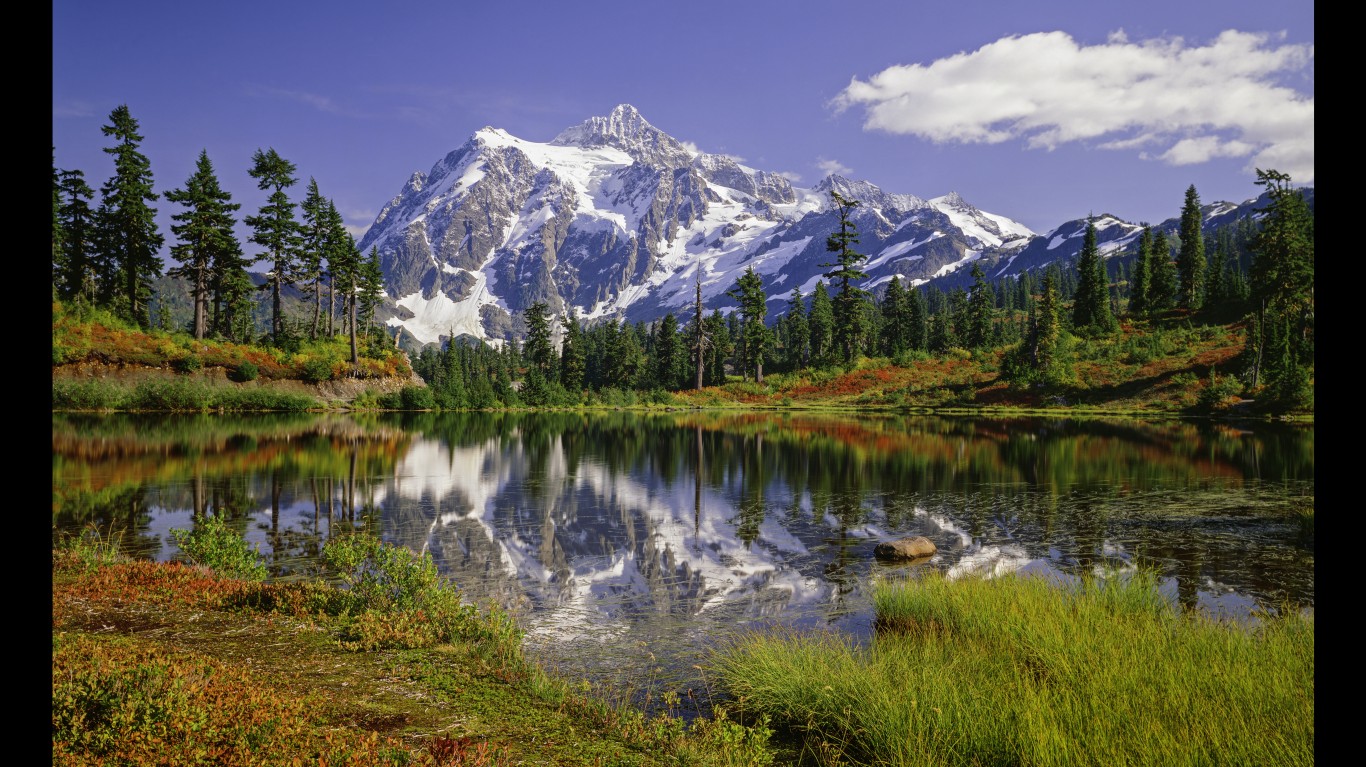
25. North Cascades National Park, Washington
> Visits in 2018: 30,085
> Change in visits from 2017: -0.8%
Another less crowded national park is North Cascades, which features glaciers, alpine lakes, and rugged mountains. State Highway 20, the scenic road that runs through the park, is part of the Cascades Loop, a longer 440-mile scenic drive. Berry bushes, maples, and western larches provide an array of colors from late September through October.
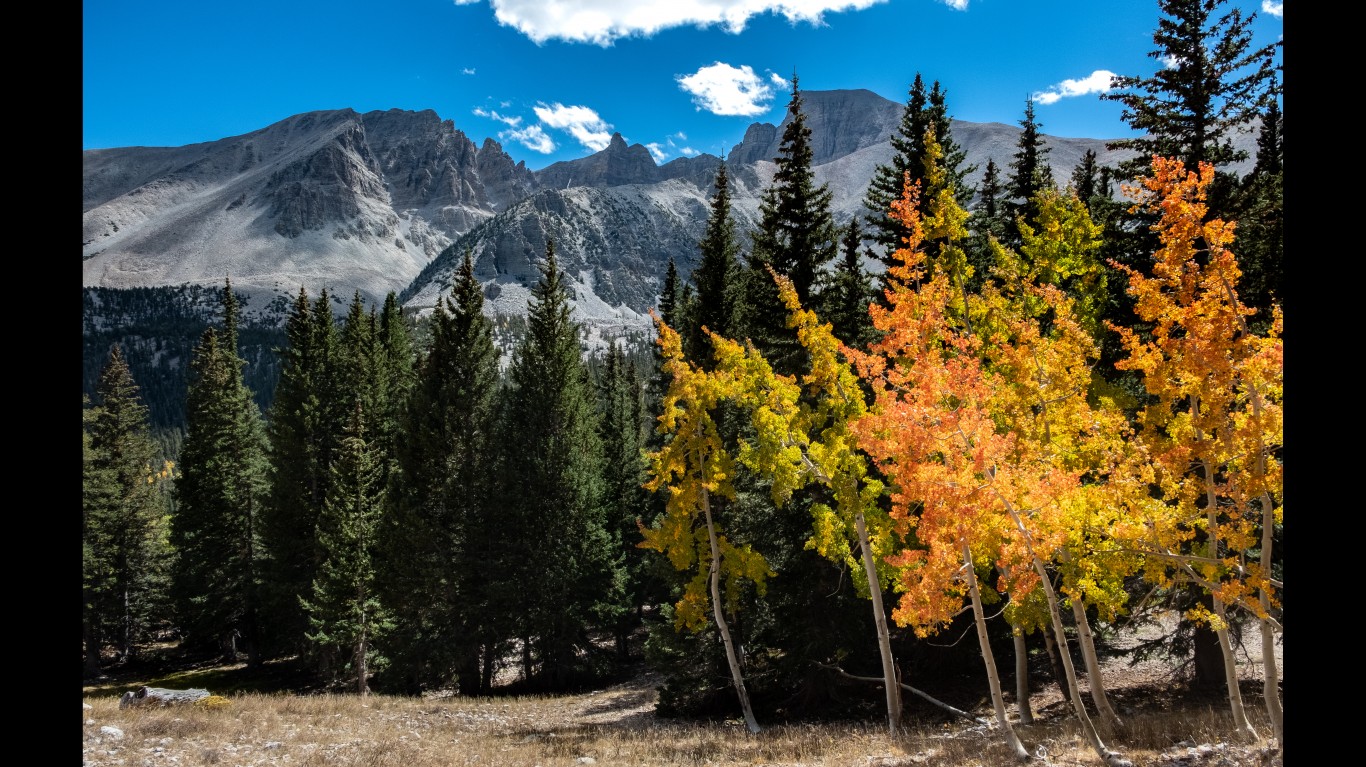
24. Great Basin National Park, Nevada
> Visits in 2018: 153,094
> Change in visits from 2017: -8.9%
Aspens along Wheeler Peak scenic drive provide fall color amid a backdrop of bare mountains and evergreen forest in this eastern Nevada national park. Home to the Lehman Caves and some of the oldest trees on earth, the bristlecone pines, this lesser-known national park is a hidden gem.
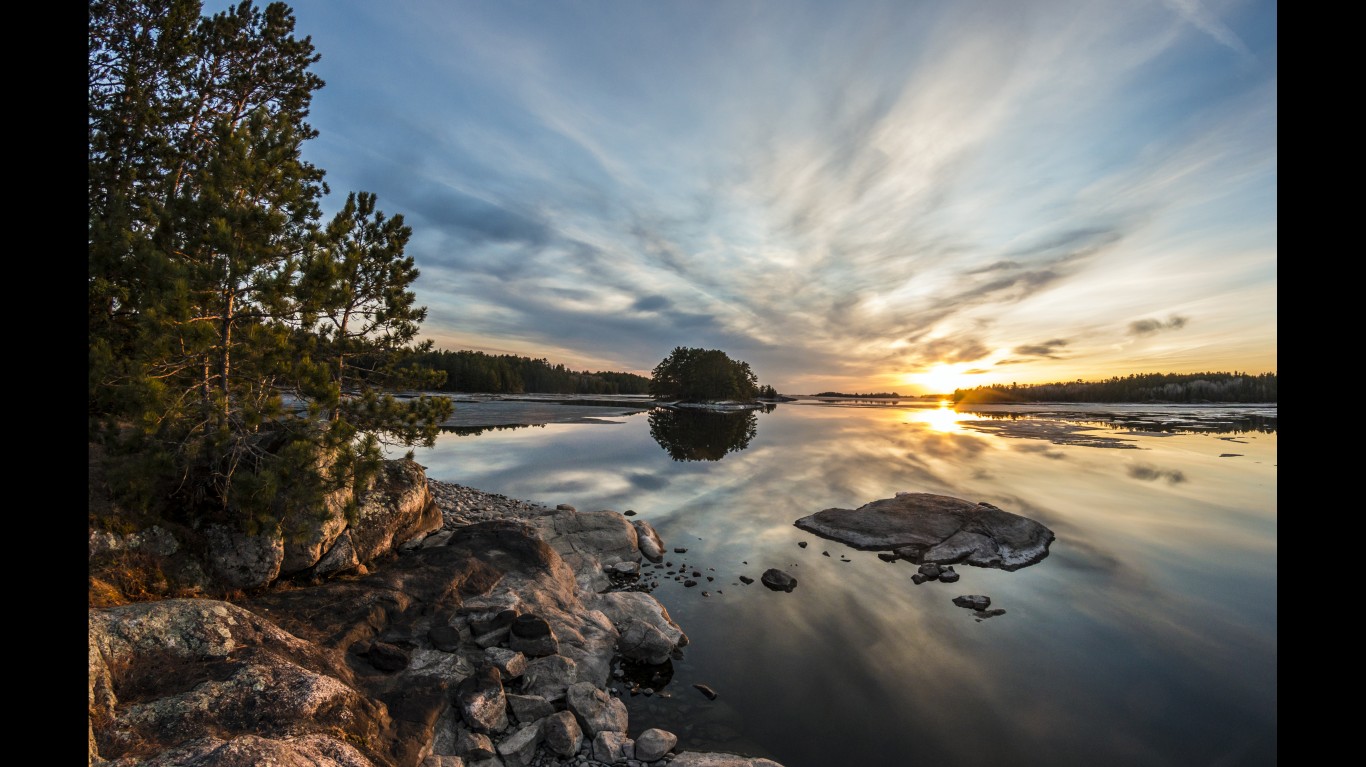
23. Voyageurs National Park, Minnesota
> Visits in 2018: 239,656
> Change in visits from 2017: 1.0%
Voyageurs National Park contains over 500 islands and 655 miles of shoreline. The park is over 40% water, so be prepared to bring a boat or sign up for a boat tour. Alternatively, leave your car behind and take an inland hike to view the foliage from within the forest. Voyageurs is also an excellent place to observe the night sky and see the Milky Way and occasionally the Northern Lights.
[in-text-ad-2]

22. Black Canyon of the Gunnison National Park, Colorado
> Visits in 2018: 308,962
> Change in visits from 2017: 0.6%
The least-visited of the four national parks in Colorado, Black Canyon of the Gunnison encompasses the most scenic section of Black Canyon, a 2,000-foot deep, 48-mile long canyon with scrub oak foliage visible along the rim. Aspen groves along Oak Flat Loop Trail also provide autumn color.
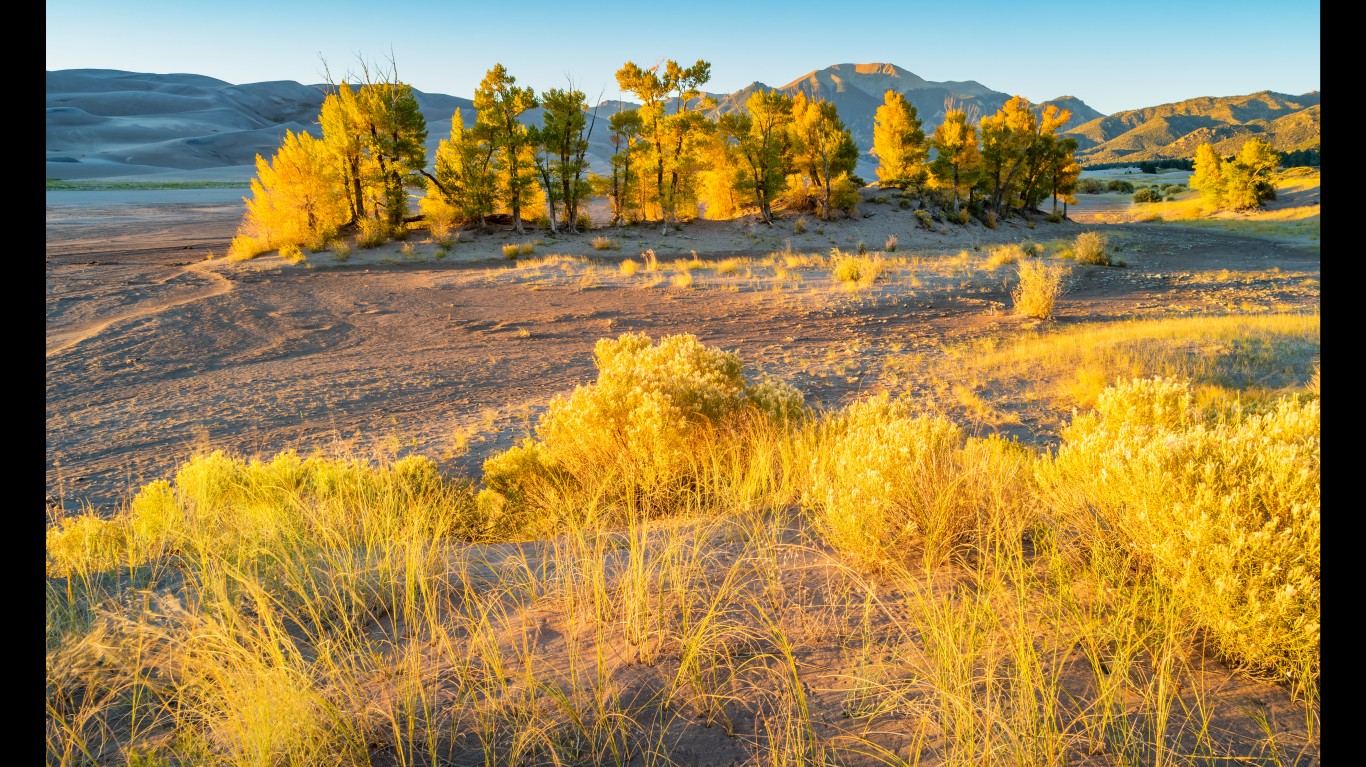
21. Great Sand Dunes National Park & Preserve, Colorado
> Visits in 2018: 442,905
> Change in visits from 2017: -9.0%
With a backdrop of the Sangre de Cristo Mountains, and Medano Creek running through the valley, Great Sand Dunes National Park is more than just sand. It is a prime viewing spot for the aspen, sumac, and cottonwood foliage, which peak through mid-October.
[in-text-ad]
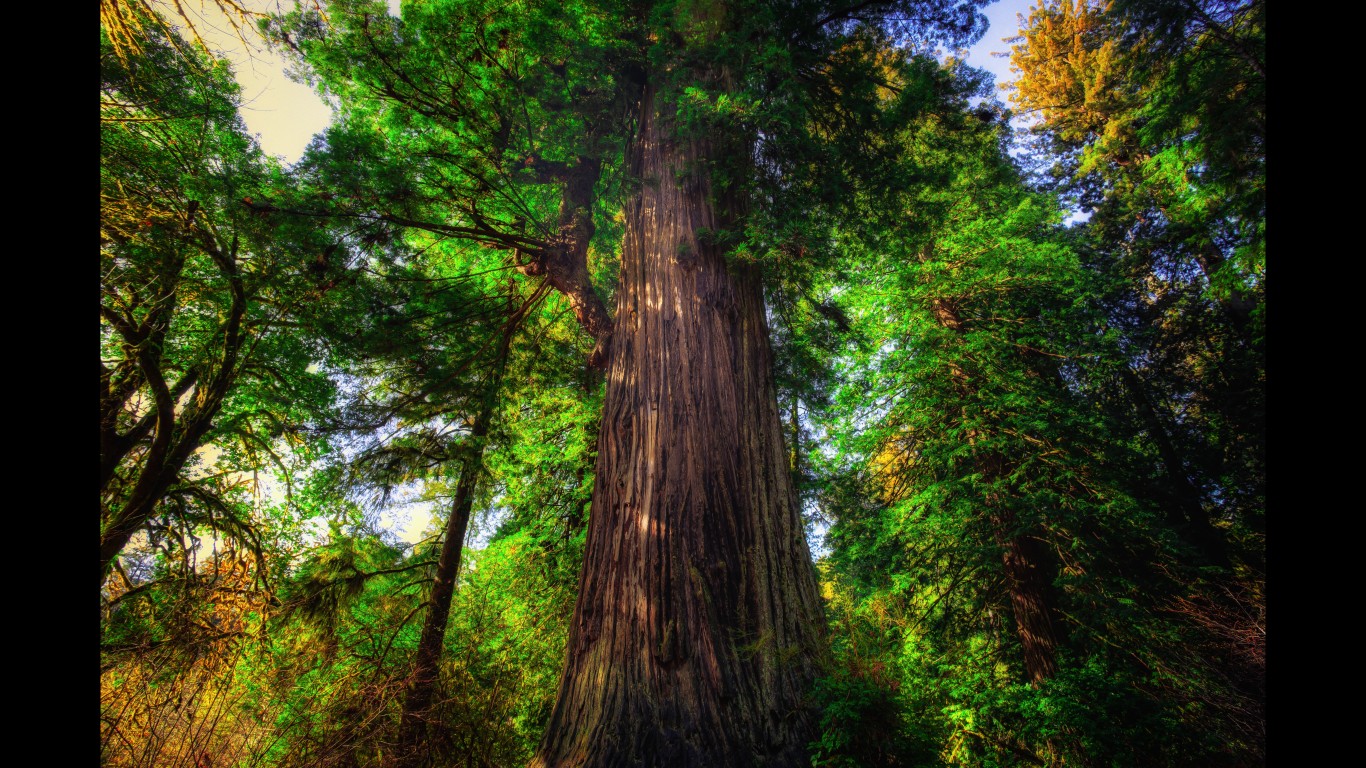
20. Redwood National Park, California
> Visits in 2018: 482,536
> Change in visits from 2017: 8.4%
Getting to Redwood National Park requires a scenic drive along California’s coastal Route 101, so keep an eye out for migratory birds, gray whales, seals, and sea lions. Once you’re in the park, you can witness some of the tallest, oldest, and largest coastal redwoods. Take a walk through the Lady Bird Johnson Grove or the Prairie Creek Trail, and keep an eye out for maple and understory foliage colors.

19. Lassen Volcanic National Park, California
> Visits in 2018: 499,435
> Change in visits from 2017: -1.5%
In addition to four types of volcanoes — shield, plug dome, composite, and cinder cone — Lassen Volcanic National Park also has oak, aspen, and sagebrush that turn golden in autumn. Head to Manzanita Lake for a colorful view in front of Lassen Peak, a 10,457-foot active volcano that last erupted in 1914.
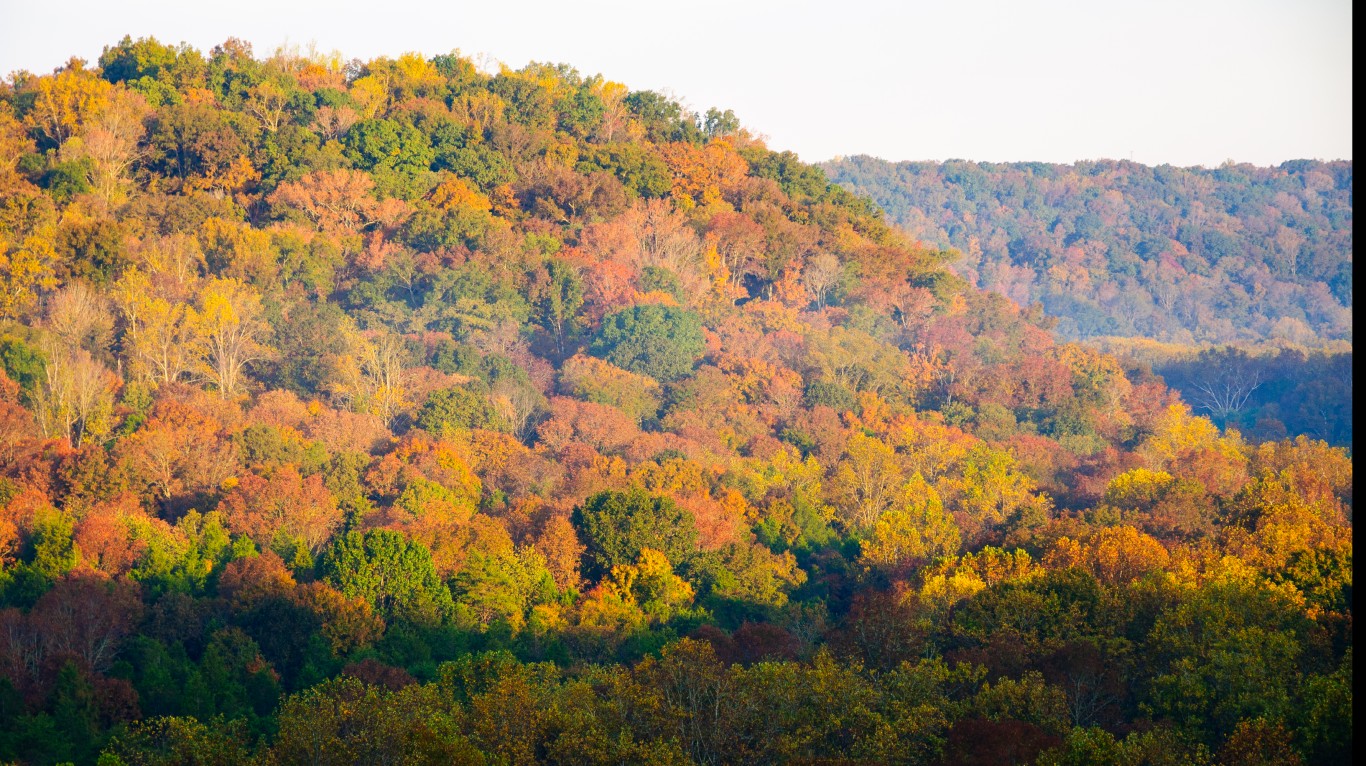
18. Mammoth Cave National Park, Kentucky
> Visits in 2018: 533,206
> Change in visits from 2017: -9.3%
Though known for its massive cavern, Mammoth Cave National Park also contains woodlands and rolling hills that provide for a classic deciduous forest color display in November. The park is much less crowded than other Southern parks, though it sees a high number of non-recreational visitors (researchers, commuters, conference attendees), with 142,923 in 2018.
[in-text-ad-2]
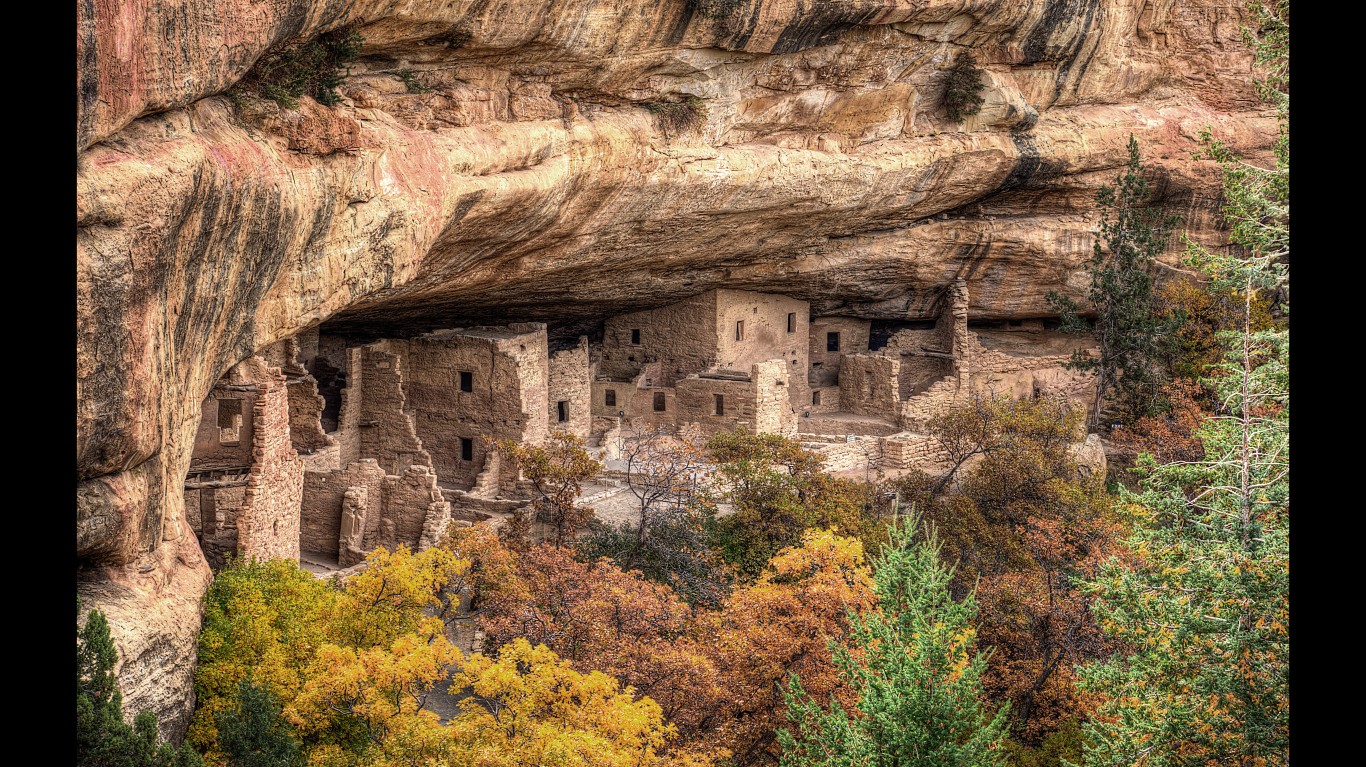
17. Mesa Verde National Park, Colorado
> Visits in 2018: 563,420
> Change in visits from 2017: -8.2%
Mesa Verde National Park houses 600 Pueblo cliff dwellings that were occupied between A.D. 600 and 1300. They’re some of the best-preserved cliff dwellings in the country. In the autumn the park turns fiery red with gambel oak foliage, especially at the lower elevations near the park’s entrance.
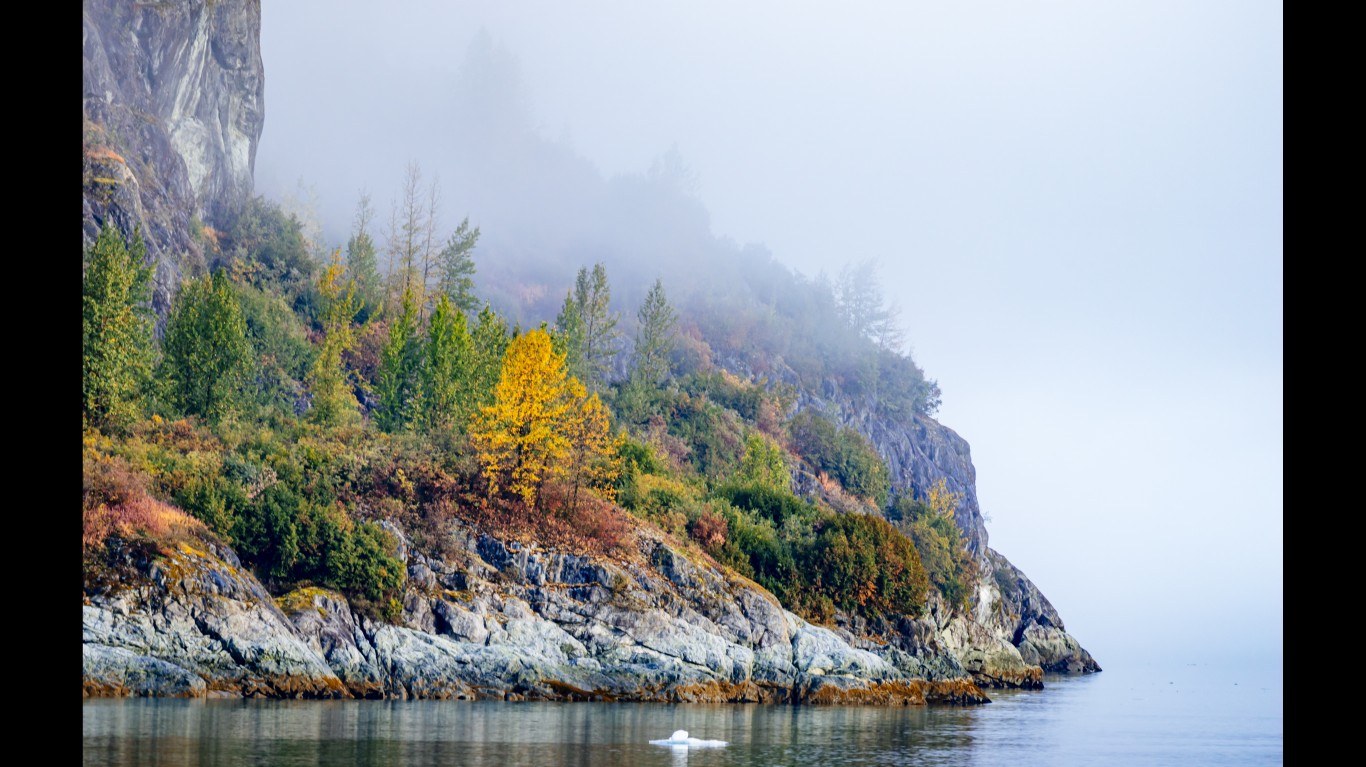
16. Glacier Bay National Park & Preserve, Alaska
> Visits in 2018: 597,915
> Change in visits from 2017: 9.3%
Autumn is a busy time for wildlife in Glacier Bay National Park, as salmon spawn, migratory birds take off for warmer climates, beavers cache food for the long winter, and moose and black tailed-deer rut. Most people visit the park by boat or cruise ship to get up close to the massive glaciers.
[in-text-ad]

15. Crater Lake National Park, Oregon
> Visits in 2018: 720,659
> Change in visits from 2017: 1.3%
The deepest lake in the United States, Crater Lake was formed just 7,700 years ago during a volcanic eruption. The waters are incredibly blue and clean and create a marvelous backdrop for the fiery foliage visible in autumn. Be sure to come in by mid-October before snow starts to accumulate.

14. Theodore Roosevelt National Park, North Dakota
> Visits in 2018: 749,389
> Change in visits from 2017: 5.8%
A drive along the Theodore Roosevelt National Park North Unit Scenic Byway is sure to dazzle, as the banks of the Little Missouri River are lined with aspens that blaze orange and yellow in autumn. Wildlife is abundant among the prairies, buttes, and sandstone spires that make up the park.
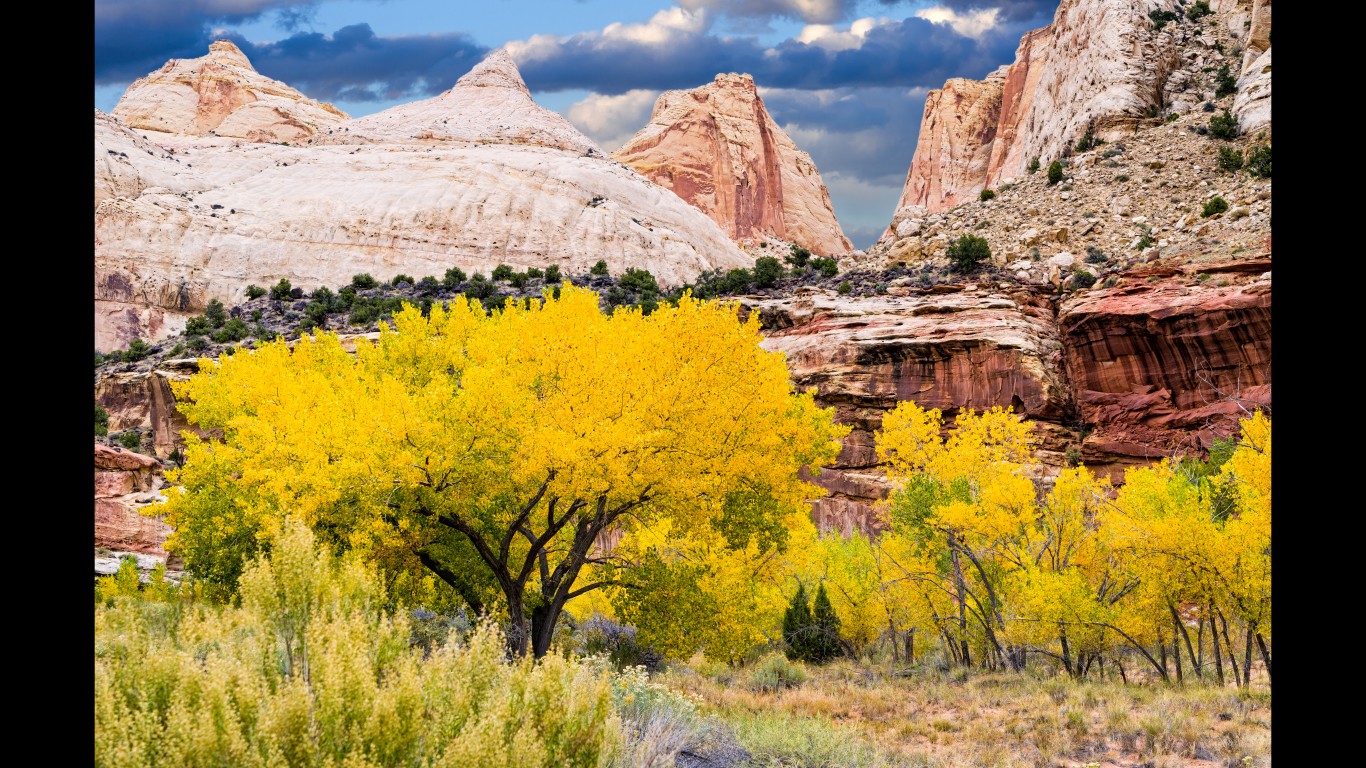
13. Capitol Reef National Park, Utah
> Visits in 2018: 1,227,627
> Change in visits from 2017: 6.7%
Although much of Capitol Reef National Park is comprised of barren, towering geologic formations, the cottonwood groves along the Fremont River turn yellow against the red sandstone in early November. A unique perk of visiting Capitol Reef in autumn is the opportunity to pick your own apples at the historic Fruita Orchard within the park.
[in-text-ad-2]
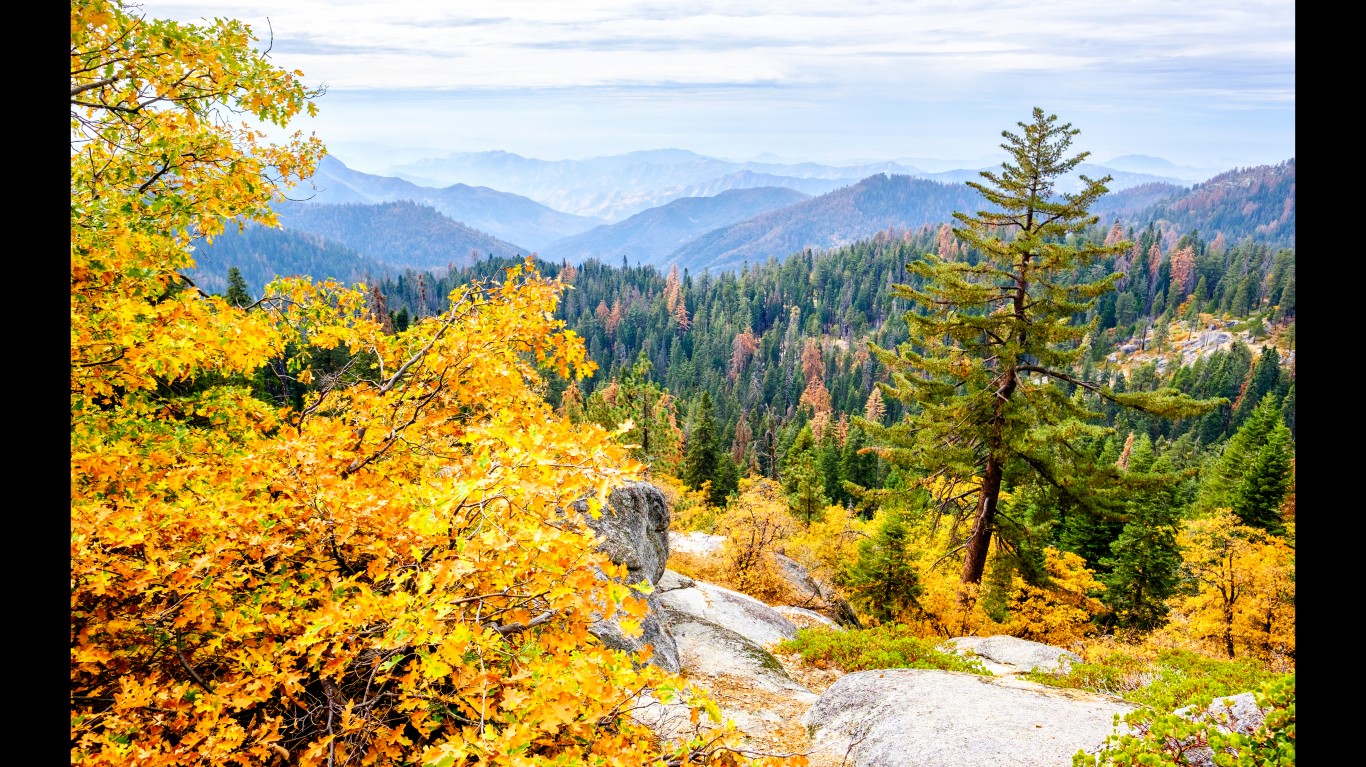
12. Sequoia National Park, California
> Visits in 2018: 1,229,594
> Change in visits from 2017: -4.8%
The redwoods at Sequoia National Park don’t produce autumn foliage, but many of the understory plants do. Dogwoods, ferns, and blue oaks provide a colorful contrast to the evergreen trees. Head to one of the less trafficked areas of the park, the 7,500-foot high Mineral King Valley, to see the cottonwood and aspen groves blaze yellow.
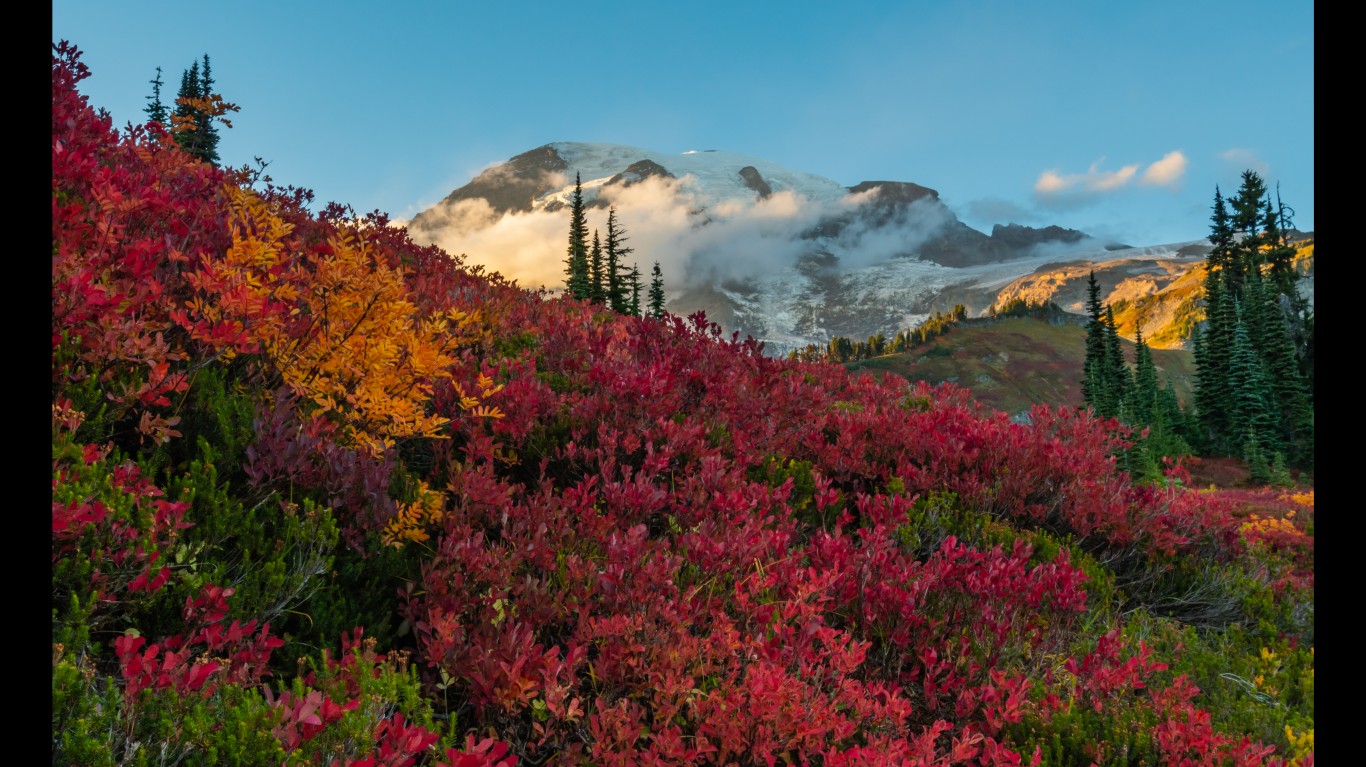
11. Mount Rainier National Park, Washington
> Visits in 2018: 1,518,491
> Change in visits from 2017: 7.2%
From mid-October into November, Mount Rainier National Park is awash with autumn colors. Huckleberries, vine maples, and willows create rainbows of color, while tamaracks, one of the few coniferous trees that drop their leaves before winter, turn gold among the evergreens. Some of the best places to see the foliage are Chinook Pass, Reflection Lakes, and Grove of the Patriarchs.
[in-text-ad]
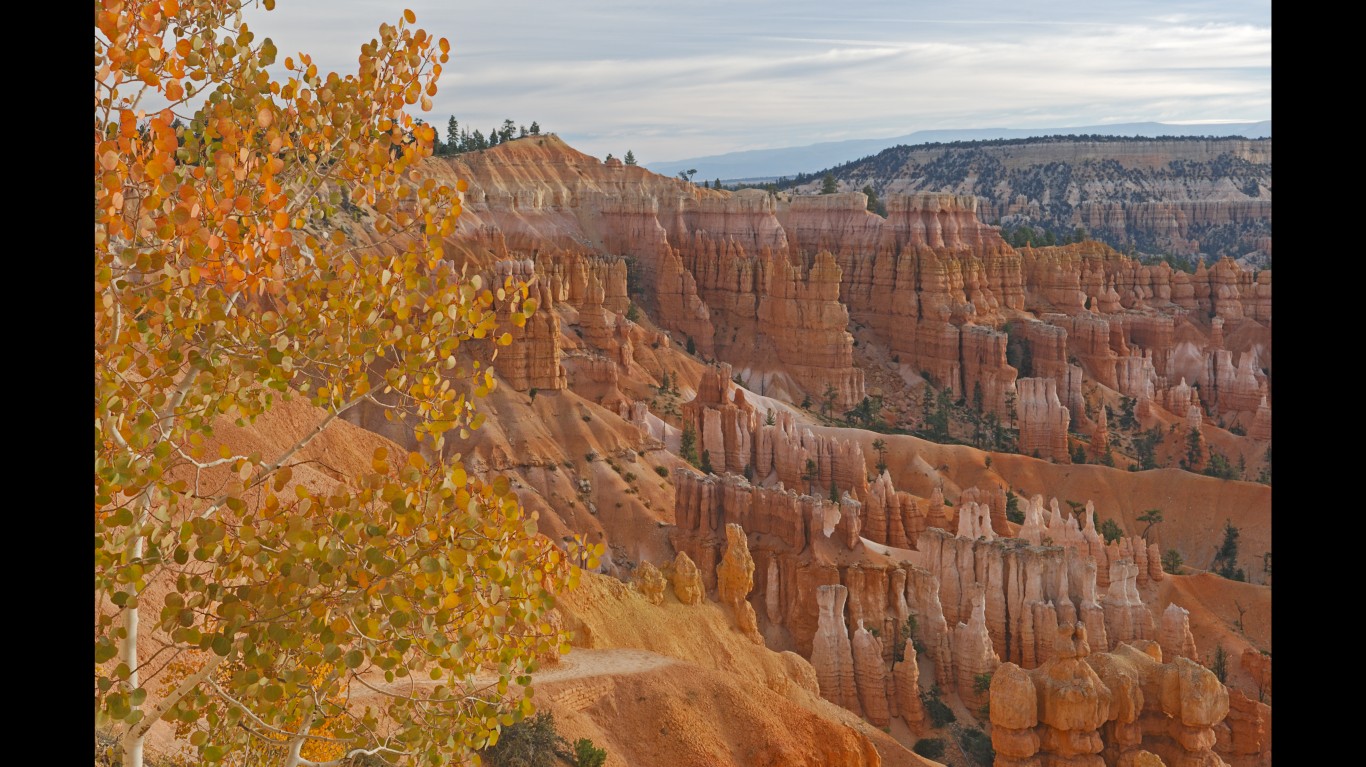
10. Bryce Canyon National Park, Utah
> Visits in 2018: 2,679,478
> Change in visits from 2017: 4.2%
Already known for its red and pink striped rock formations, Bryce Canyon takes on another layer of colorful contrast as quaking aspens turn bright yellow against the evergreens and the world’s largest concentration of hoodoos — tall, skinny spires of rock that rise from arid basins.

9. Glacier National Park, Montana
> Visits in 2018: 2,965,309
> Change in visits from 2017: -10.3%
Autumn hits early in Glacier National Park, with foliage starting to change in mid-September in the western region and late September on the eastern side of the park. As most park facilities close by the end of September, Glacier takes on an air of peace and wildlife becomes more active as the colors change. Be sure to visit by mid-October, when the last trees turn yellow and Going-to-the-Sun Road closes for the winter.

8. Olympic National Park, Washington
> Visits in 2018: 3,104,455
> Change in visits from 2017: -8.7%
The temperate rainforests in Olympic National Park see 12 to 14 feet of rain a year, so dress appropriately and you’ll be rewarded with the possibility of elk, bobcat, and eagle sightings. Salmon spawn in the fall, and many predators come out to feed as the fish jump up the cascades to their spawning grounds. Bigleaf and vine maples turn shades of yellow, orange, and red, contrasting with the lush, green, moss-covered trees.
[in-text-ad-2]

7. Grand Teton National Park, Wyoming
> Visits in 2018: 3,491,151
> Change in visits from 2017: 5.3%
The 12,000-foot peaks of Grand Teton National Park are stunning no matter what the season, but autumn brings a dramatic carpet of color along the rivers and hillsides below the mountains. Deer, elk, moose, and bears are active in the fall as they mate and prepare for winter, so autumn is a great time to see wildlife in the park.

6. Acadia National Park, Maine
> Visits in 2018: 3,537,575
> Change in visits from 2017: 0.8%
Autumn can be busy in Acadia National Park as leaf-peepers flood the roads, but in mid-October the crowds die down and the trees still boast an array of colors. From the wetlands to the rocky shoreline to the mountain peaks, Acadia’s diverse landscape is awash with colors until late October.
[in-text-ad]

5. Yosemite National Park, California
> Visits in 2018: 4,009,436
> Change in visits from 2017: -7.6%
The fall shoulder season in Yosemite is well worth the lack of amenities. Many park services shut down at the end of September, but October is the time for seeking foliage. Black oaks, dogwoods, and maples show off their colors amongst the more numerous evergreens from mid to late October. Be sure to check weather reports, as snow sometimes falls before November.

4. Yellowstone National Park, Wyoming
> Visits in 2018: 4,115,000
> Change in visits from 2017: 0.0%
Cooler temperatures mean fewer humans but more wildlife in Yellowstone National Park. Bears, hawks, and elk are common sights, but be sure to follow park regulations and maintain a safe distance from the animals. For foliage viewing, the more colorful spots in the park are the Lamar Valley, Mammoth Hot Springs, and Blacktail Plateau Drive.

3. Zion National Park, Utah
> Visits in 2018: 4,320,033
> Change in visits from 2017: -4.1%
The red sandstone canyons and cliffs that Zion is famous for only become more picturesque as autumn colors engulf the lowlands and river flats. Late October is a great time to view the foliage, when crowds are thin and temperatures are comfortable. A free shuttle bus ride down the Zion Canyon Scenic Byway — which is closed to private vehicles through November, when the shuttle stops running — is one of the best ways to easily take in the scenery.
[in-text-ad-2]

2. Rocky Mountain National Park, Colorado
> Visits in 2018: 4,590,493
> Change in visits from 2017: 3.5%
As early as late August, the quaking aspens at higher altitudes in Rocky Mountain National Park begin turning yellow. By mid-September the colors peak across the park, and the elk travel to lower elevations to breed. While there isn’t really a bad spot for viewing the foliage, Bear Lake Road and the Trail Ridge Road are some of the best.

1. Grand Canyon National Park, Arizona
> Visits in 2018: 6,380,495
> Change in visits from 2017: 2.0%
Most people don’t picture trees when they think of the Grand Canyon, and that may be because most visitors only stop at the South Rim. The North Rim of the canyon, while less accessible, is lined with aspens, birches, and oaks and is the best spot in the park to see fall colors. Late September to mid-October are ideal times to visit, as the North Rim closes at the end of October.
Take This Retirement Quiz To Get Matched With An Advisor Now (Sponsored)
Are you ready for retirement? Planning for retirement can be overwhelming, that’s why it could be a good idea to speak to a fiduciary financial advisor about your goals today.
Start by taking this retirement quiz right here from SmartAsset that will match you with up to 3 financial advisors that serve your area and beyond in 5 minutes. Smart Asset is now matching over 50,000 people a month.
Click here now to get started.
Thank you for reading! Have some feedback for us?
Contact the 24/7 Wall St. editorial team.
 24/7 Wall St.
24/7 Wall St.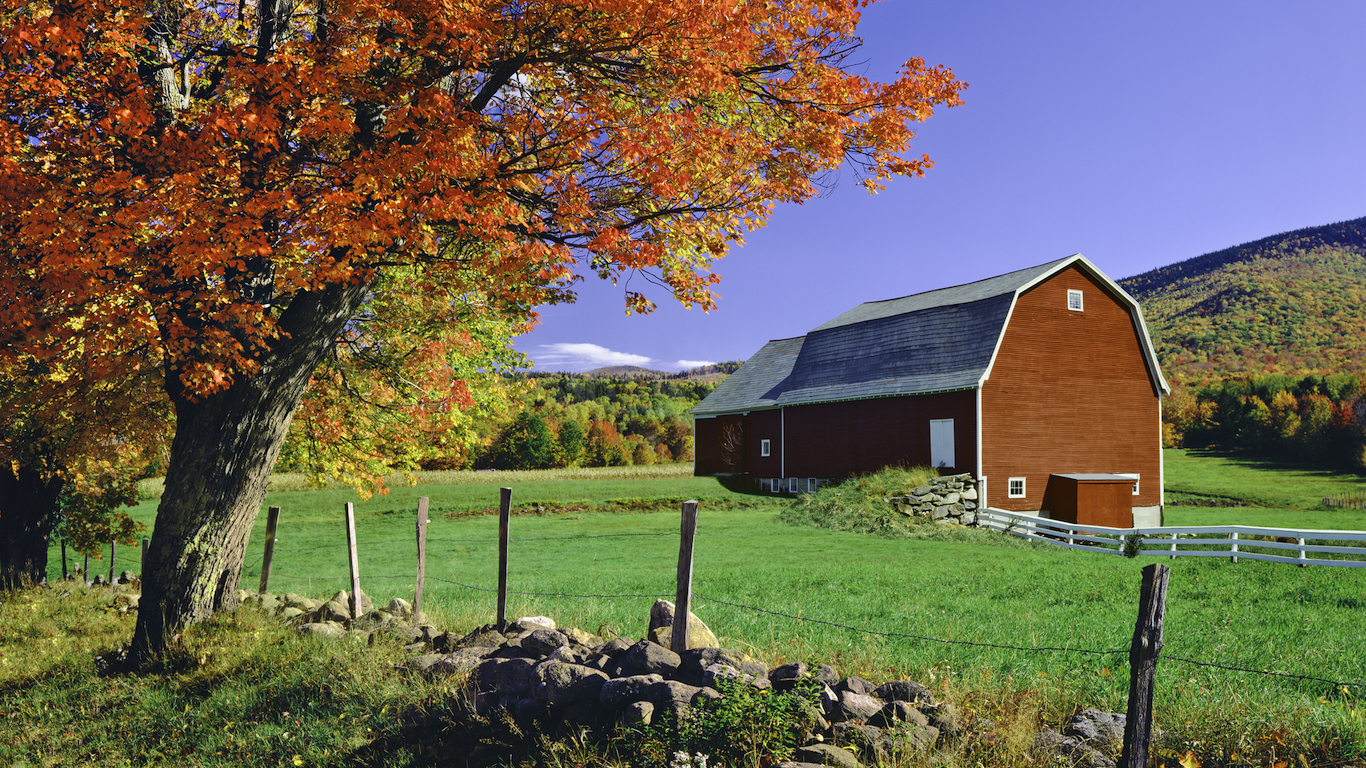 24/7 Wall St.
24/7 Wall St.

